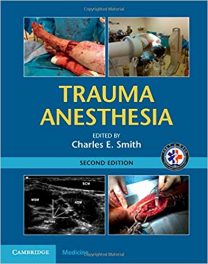 Editor: Al S. Aly, MD
Editor: Al S. Aly, MD
Publisher: Quality Medical Publishing – 383 pages
Book Review by: Nano Khilnani
Body contouring surgery is desired typically by overweight and obese people. An obese person is one who has a body mass index (BMI) of 30 and over. The BMI is calculated by dividing the weight of a person by the square of his or her height.
The United States ranked 19th in the world in obesity in 2014, according to a Wikipedia article based on a World Health Organization (WHO) report that year. The report showed that nearly 34 percent of the 318 million people in the U.S. in July 2014 were obese, and the numbers of overweight and obese people have continued to grow, not only in this country, but also worldwide.
Body contouring after massive weight loss is a relatively newer practice subspecialty within plastic surgery. It requires ‘creative thinking and problem solving’ (to borrow a phrase) for surgeons to understand the unique problems of each overweight and obese patient and to successfully solve them. The image on the cover of this book gives you an idea of how patients gradually transform and improve their physical looks, after they undergo a series of contouring procedures.
Books on body contouring surgery available on the market are few and rare, although the number is growing. We at BIZ INDIA Online News are always looking out to review books on emerging fields, particularly in medicine and surgery, for our Books section.
In this book published in 2006, the Foreword writer Dr. Foad Nahai points out:
“Plastic surgeons are natural innovators, adept at identifying problems and devising unique solutions to address them. Throughout the evolution of our specialty, surgeons have always taken the lead in forging new directions and enhancing the art and science of what we do. Today, much of this creative energy is being devoted to one of the newest areas within plastic surgery: body contouring after massive weight loss.
There is a growing demand for guidance and information on this topic, which is quickly becoming one of the fastest-growing areas within our specialty. Traditional applications are not applicable to these patients, who cannot be approached in a patchwork fashion…these patients require a total body approach.”
Thirteen practitioners and professors of plastic and reconstructive surgery, including bariatric medicine and surgery – from all over the United States, contributed to the contents of this book by authoring or coauthoring the 11 chapters of this book, namely:
- Part I. Fundamentals
- Obesity: A Worldwide Health Care Epidemic
- Surgical Treatment of Morbid Obesity
- Approach to the Massive Weight-Loss Patient
- Surgical Technique By Anatomic Region
- Belt Lipectomy
- Lower Body Lift and Medical Thigh Lift
- Circumferential Body Contouring
- Lower Extremity Body Contouring Aster Massive Weight Loss
- Buttocks Aesthetics: Shaping, Contouring, and Enhancing
- Brachioplasty
- Upper Body Lift
- Breast Reshaping After Massive Weight Loss: Total Parenchymal Reshaping and Dermal Suspension
Dr. Eneida Roldan points out in chapter 1, Obesity: A Worldwide Health Care Epidemic that health risks associated with obesity include early death, causing women to lose an average 7.1 years and men to lose an average 5.8 years of life.
She cites statistics pointing out that besides decreased life expectancy, obese people also have higher-than-average incidences of many diseases, including type 2 diabetes (57 percent), gallbladder disease (30 percent), hypertension and coronary disease (17 percent), osteoarthritis (14 percent), and sex-related cancers (11 percent).
Obese people also suffer more than others from asthma, back pain, congestive heart failure, depression, gastrophageal reflux disease, infertility, lipid abnormalities, and obstructive sleep apnea, Dr. Roldan points out.
In order to reduce further weight gain, obese people undergo a number of bariatric surgical procedures. These are discussed by Drs. Robert T. Marema, Cynthia K. Buffington, and Michael A. Perez in chapter 2, Surgical Treatment of Morbid Obesity. Among these operations – that are well illustrated – are: gastric bypass, gastroplasty, laparoscopic gastric bypass, biliopancreatic diversion with duodenal switch, and laparoscopic adjustable gastric band.
This chapter provides a section on body contouring after bariatric surgery. It points out what to do about ‘redundant and amorphous’ skin that results after bariatric surgery. Such loose skin in the abdomen, arms, breasts, and thighs can cause problems such as intertrigo and difficulty in activities such as performing sexual activity, urinating, and even just walking.
This section instructs you on how to deal with the patients’ embarrassment and lack of self-esteem with such loose skin. Body contouring after bariatric surgery “significantly improves the physical and emotional status” of patients,” the chapter authors state, pointing out that studies show these outcomes.
This is an excellent, well-organized text on body contouring after massive weight loss. It has been developed and written by experienced surgeons and teachers on the subject. This is a unique book on a growing specialty surgery.
Editor:
Al S. Aly, MD, FACS is in private practice at Iowa City Plastic Surgery in Coralville, Iowa.
Illustrator:
Amanda Behr, MD, CMI
Contributors:
Siamak-Agha Mohammadi, MBBCChir, PhD
Margeurite E. Aiken, MD, MFA
Al S, Aly, MD, FACS
Cynthia K. Buffington, PhD
Albert E. Cram, MD, FACS
Joseph P. Hunstad, MD, FACS
Ted E. Lockwood, MD, FACS
Robert T. Marema, MD, FACS
Constantino G. Mendieta, MD, FACS
James P. O’Toole, MD
Michael A. Perez, MD, FACS
Eneida O. Roldan, MD, MPH, MBA
Peter Rubin, MD







